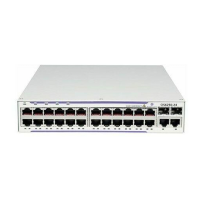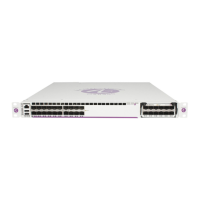CPU Queues
Page 80 7210 SAS D, E, K OS Quality of Service Guide
along its path to a destination egress point. 7210 SAS devices support eight (8) forwarding classes
(Table 31).
Note that Table 31 presents the default definitions for the forwarding classes. The forwarding class
behavior, in terms of ingress marking interpretation and egress marking, can be changed by QoS
Policies.
Forwarding-Class To Queue ID Mapping
There are 8 forwarding classes supported on 7210 SAS devices. Each of these FC is mapped to a
specific queue. By mapping FC to different queues the differential treatment is imparted to various
classes of traffic.
FC to Queue ID mapping for 7210 SAS-E and 7210 SAS-D
On these platforms there are only 8 queues available at the port level. These 8 queues are created
by default per port. Users cannot create or delete the queues or the queue ID. Only the queue
parameters can be changed. The queue-id is not a configurable entity and queue ID 1 to 8 are, by
default, used to identify these 8 queues available on the port. The 8 queues are available both on
Table 31: Forwarding Classes
FC-ID FC Name FC
Designa-
tion
DiffServ
Name
Notes
7 Network
Control
NC NC2 Intended for network control traffic.
6 High-1 H1 NC1 Intended for a second network control
class or delay/jitter sensitive traffic.
5 Expedited EF EF Intended for delay/jitter sensitive traffic.
4 High-2 H2 AF4 Intended for delay/jitter sensitive traffic.
3 Low-1 L1 AF2 Intended for assured traffic. Also is the
default priority for network management
traffic.
2 Assured AF AF1 Intended for assured traffic.
1 Low-2 L2 CS1 Intended for BE traffic.
0 Best Effort BE BE

